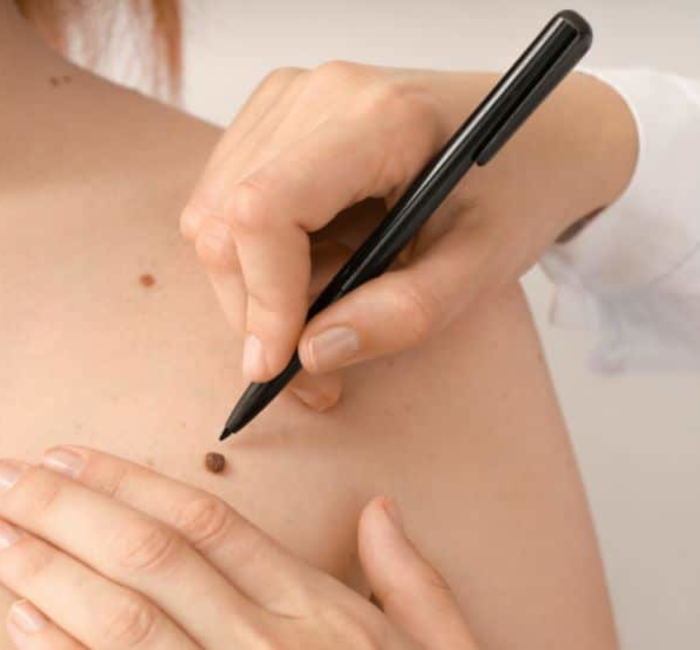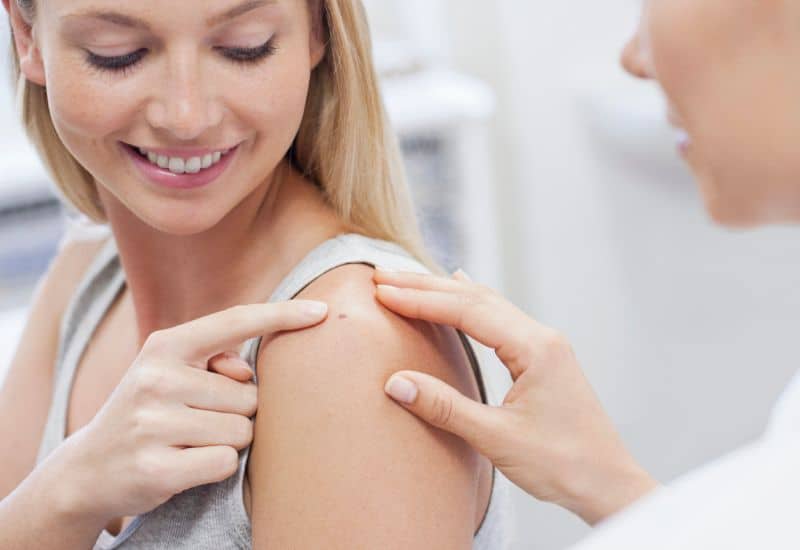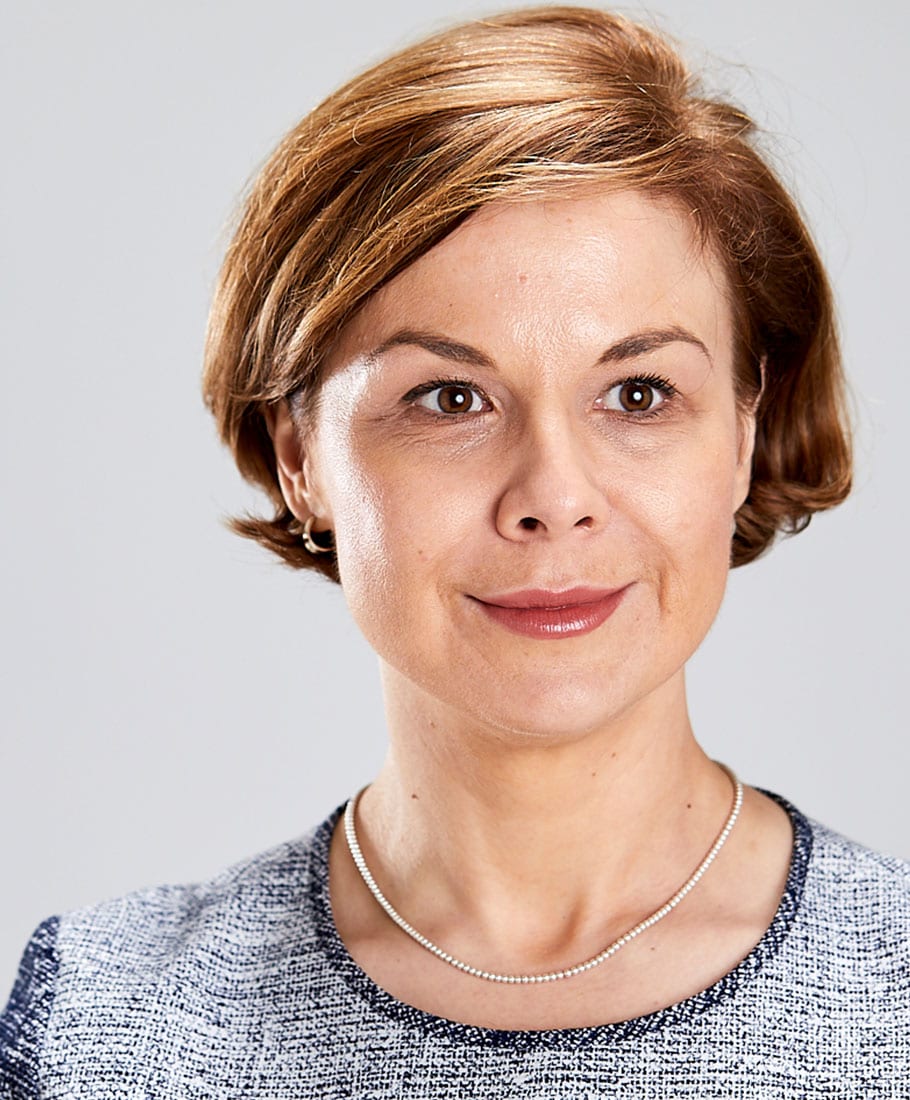Procedures
Skin Mole Removal

Every person has moles on their skin. Most people have 10 to 40 moles somewhere on their skin by the time they reach adulthood. These small skin marks are usually harmless, but some might find them unattractive or bothersome, especially if they’re in a noticeable spot. In some cases, moles might become atypical or display signs of skin cancer, which is when they become a medical concern. This is where skin mole removal comes into play.
Chester Consultant Plastic Surgeon Anca Breahna performs skin mole removal surgery, as well as other face, body and skin procedures.
At a glance
Depends on the type of procedure performed
Local Anaesthesia
Table of Contents
What is Skin Mole Removal?
Skin mole removal is a simple medical procedure done to remove unwanted or potentially harmful moles from the skin. Moles are small, usually dark spots on the skin made up of melanocytes – the cells that produce pigment in your skin. They’re generally harmless, but if a mole changes in size, colour, or shape, it could be a sign of skin cancer. In such cases, or if a mole is causing discomfort or affecting your appearance, you may choose to have it removed.
Who Needs Skin Mole Removal?
Moles are very common, and it’s normal to have a few. But some people might choose to have them removed for a number of reasons:
- Medical reasons: If a doctor thinks a mole might be skin cancer (melanoma), they’ll suggest you have it removed. Melanoma is the most dangerous type of skin cancer, but when caught and treated early, it’s almost always curable
- Cosmetic reasons: Some people choose to have moles removed because they don’t like the way they look. This is especially the case for moles on the face or other highly visible areas
- Physical discomfort: If a mole is in a place where it gets irritated – for example, if your clothes rub against it – you might choose to have it removed for comfort

Benefits of the Skin Mole Removal Procedure
Having a mole removed can have a number of benefits. Here are a few:
- Health: The primary benefit of mole removal is to maintain good health. If a mole is atypical or has changed in any way, removing it and sending it to biopsy can help detect skin cancer early, increasing the chances of successful treatment
- Comfort: If a mole is in a spot that is constantly irritated by clothing or jewellery, removal can lead to a significant increase in comfort
- Cosmetics: For some people, removing a mole, especially one that is on the face or another noticeable place, can make them feel better about their appearance
Types of Skin Mole Removal Procedures
Surgical Excision
This technique is often used for larger moles, or those that have a chance of being cancerous. It involves the following steps:
- The area around the mole is thoroughly cleaned and a local anaesthetic is applied
- Using a scalpel, Anca cuts the mole and a border of good skin around it. This is to ensure that any potentially cancerous cells surrounding the mole are also removed
- Once the mole and the surrounding skin are removed, your plastic surgeon will stitch up the wound
- The removed mole is then sent for a biopsy to check for any cancerous cells
- One advantage of this method is that if the mole is found to be cancerous, often all the cancerous cells are removed during the excision. However, this method can leave a small scar
Surgical Shave
This method is usually used for smaller, non-cancerous moles that are raised above the skin. It’s a simpler procedure than a surgical excision:
- The area around the mole is cleaned and numbed with a local anaesthetic
- Using a small, sharp blade, the dermatologist shaves the mole off just below the level of the surrounding skin
- A cauterising tool may be used to stop any bleeding, and a topical antibiotic will be applied to prevent infection
- This method usually leaves minimal scarring and doesn’t require stitches. As it only removes the mole down to skin level, there is a chance that the mole can grow back over time
Laser Mole Removal
For very small, non-cancerous moles that don’t protrude above the skin, laser mole removal can be an option:
- The area around the mole is cleaned and a local anaesthetic is applied
- Your plastic surgeon uses an intense beam of light to break down the mole
- Because the laser cauterises as it cuts, there’s very little bleeding or risk of infection
- The laser can’t penetrate very deeply, so this method is used primarily for moles that are very flat and don’t extend below the surface of the skin
Freezing or Cryotherapy
This method is used primarily for smaller, non-cancerous moles:
- Liquid nitrogen is applied to the mole, which freezes and kills the cells
- Over the following days, the mole will scab over and eventually fall off
- The advantage of this method is that it’s quick and leaves minimal scarring. There is a slight risk of damage to the surrounding skin

How is the Skin Mole Removal Procedure Performed?
The process of mole removal will vary depending on the technique used. Here is a step-by-step overview of how each mole removal procedure is typically performed:
Surgical Excision
- The procedure begins with the area around the mole being cleaned. This helps to minimise the risk of infection
- A local anaesthetic is then applied to numb the area. This ensures that the procedure is painless
- Anca then uses a scalpel to cut the mole, along with some surrounding skin, to ensure the entire mole is removed
- Depending on the size and depth of the mole, stitches may be required to help close the wound
- Once the procedure is complete, the removed mole is sent off for a biopsy to check for any abnormal cells
Surgical Shave
- The skin around the mole is first cleaned, followed by the application of a local anaesthetic to numb the area
- Anca uses a small blade to shave off the mole, just below the surface of the skin
- A cauterising tool may be used to stop any bleeding that occurs
- The wound is then covered with a bandage and antibiotic ointment to prevent infection
Laser Mole Removal
- As with other methods, the procedure starts with cleaning the skin around the mole
- A local anaesthetic is applied to numb the skin
- A specialised laser is used to break down the cells in the mole, which are then absorbed by the body over time
- This method usually requires multiple sessions to fully remove the mole
Freezing or Cryotherapy
- The area around the mole is cleaned and prepped
- Instead of a local anaesthetic, a cold spray of liquid nitrogen is applied to the mole
- The freezing temperature causes the cells within the mole to die. Over the next few weeks, the mole gradually falls off
There are various methods of mole removal available, each suited to different types of moles, and each having its own advantages and disadvantages. Anca will advise you on the most appropriate method for your individual circumstances.
Recovery after Skin Mole Removal Procedure
Recovering from a mole removal procedure is generally simple and quick, but the exact process depends on the type of procedure you’ve had.
After surgical excision, you’ll likely have stitches. Anca will give you instructions on how to care for your wound, which could include:
- Keeping the area clean by washing it gently with soap and water
- Applying an antibiotic ointment to prevent infection
- Covering the wound with a bandage for the first few days to protect it
Your plastic surgeon will tell you when you can remove the bandage, and when you’ll need to come back to have your stitches removed, usually in one to two weeks.
After a surgical shave, you won’t have stitches. Your plastic surgeon will still give you advice on how to care for your wound. This might include:
- Applying petroleum jelly to keep the wound moist and prevent scarring
- Using a bandage to protect the area
Regardless of the type of procedure, you may experience some mild discomfort, swelling, or redness in the days after the procedure. These symptoms are generally mild and should go away on their own. If they persist, you should consult your plastic surgeon.
Anca may also give you specific instructions on what to do and what to avoid during your recovery. For example, she might advise you to:
- Avoid sun exposure, as this can darken the skin and make a scar more noticeable
- Avoid strenuous physical activity for a few days to a week, as this can cause the wound to bleed or delay healing
- Watch for signs of infection, such as increased pain, swelling, redness, or pus
Reviews
Patient satisfaction is the top priority for Anca. You can find how patients feel about her work below.
Wish I’d Done It Sooner! I am so pleased with the results
After searching and deliberating for a long time, I consulted Anca regarding the removal of 3 lipomas. From start to finish, she was fantastic! One of the lipomas was on my forehead and I have to search for the scar! I am so pleased with the results of all and the one regret is that I didn’t find her sooner. I wouldn’t hesitate to recommend her

Miss Breahna removed a cancerous nodule from my forehead in March 2021. I was quite nervous when I arrived at the hospital, but when I was greeted by a member of her team I started to feel calmer as they were so professional and friendly. Once inside the theatre Miss Breahna and her team helped me to feel relaxed and comfortable throughout, the team atmosphere was friendly and upbeat during my operation and I was looked after wonderfully. I would recommend Miss Breahna and her team to anyone requiring this type of surgery.
Kate Hodson

Ms Anca Breahna was most kind and empathetic during my recent procedure for skin cancer. She reassured me that I’m now completely clear, I have total confidence in her and would recommend her unreservedly. Thank you Anca.
Further Reading
- Read Anca’s Blog on Treatments and Solutions for Skin Moles
- Read Anca’s Blog on Recovery after Mole Removal
- Read Anca’s Blog on The Mole Guide
- Read Anca’s Blog on Skin Cancer & Mole Surgery At Chester Cosmetic Surgery

Procedure
Frequently asked questions
How painful is the mole removal procedure?
The mole removal procedure itself is usually painless. A local anaesthetic is used to numb the area around the mole before the procedure begins. You might feel a slight prick from the anaesthetic injection. After the procedure, there may be some discomfort, but this is typically mild and can be managed with over-the-counter pain relief medication.
Will there be a scar after the mole removal procedure?
Whether a scar remains after mole removal depends on the method used and the size and location of the mole. Surgical excision, which involves cutting into the skin, is more likely to leave a scar than a method like surgical shave or freezing. Anca can discuss scarring risks with you before the procedure, and she can provide advice on how to minimise any potential scarring during healing.
Is mole removal only for cancerous moles?
No, mole removal can be performed for both medical and cosmetic reasons. If a mole is suspected to be cancerous or pre-cancerous, your plastic surgeon will likely recommend removal. However, many people also choose to have moles removed for cosmetic reasons, or because the mole is in a location where it frequently gets irritated.
How long does it take to recover from a mole removal procedure?
Recovery time depends on the size of the mole and the method of removal. For minor procedures such as a surgical shave or freezing, healing usually occurs within a couple of weeks. For larger moles that require surgical excision, the wound might take a few weeks to heal. During the recovery period, it’s important to care for the wound as instructed by your plastic surgeon to avoid complications.
Can a mole grow back after removal?
In most cases, once a mole is removed, it does not return. However, if the mole was not completely removed, there’s a chance it could regrow. If you notice that a mole seems to be coming back after removal, it’s important to consult your plastic surgeon.
Risks of Skin Mole Removal Procedure
As with any surgical procedure, mole removal comes with some risks. While complications are rare, it’s important to be aware of them:
- Infection: Any time the skin is cut, there’s a risk of infection. You can reduce this risk by following your plastic surgeon’s instructions for wound care.
- Scarring: Scarring is a common side effect of mole removal. There are steps you can take to reduce scarring, such as avoiding sun exposure and using a scar-minimising cream as recommended by your plastic surgeon
- Incomplete removal: In some cases, a mole may not be completely removed and may grow back
- Nerve damage: This is a very rare side effect, but if a mole is removed from certain parts of the body, such as the face, there is a small chance of nerve damage
- Regrowth of cancerous cells: If a mole is removed because it was cancerous, there’s always a chance that not all of the cancer was removed and it could grow back
Before having a mole removed, discuss the risks with your plastic surgeon and make sure you understand what to expect. The procedure is generally safe and effective, but it’s important to go into it with a clear understanding of the potential outcomes.
Medical References about Skin Mole Removal
- Mole Removal: Surgery, Aftercare & Scars – Cleveland Clinic
- Moles – Diagnosis and treatment – Mayo Clinic
- Removal of Moles – NCBI
- What Happens When You Get a Mole or Skin Tag Removed? – WebMD
- Mole Removal Scar: Healing and Treatments – Medical News Today






